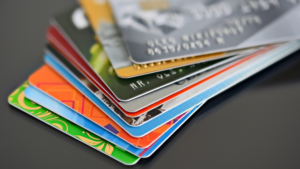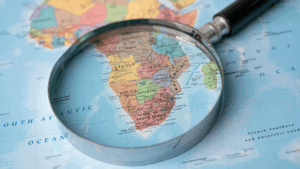Start With a Realistic Travel Budget
Before you can save for a vacation, you must know how much to save. Vague goals rarely get results. Instead, nail down specifics: Where are you going? For how long? What kind of experience do you want—budget backpacking, luxury resort, or something in between?
Break it down into categories: airfare, lodging, meals, transportation, activities, travel insurance, and a buffer for surprises. Use tools like Google Flights for airfare estimates or Kayak’s trip planner for total cost projections. Don’t forget to include pre-trip expenses like passports, gear, or vaccinations if needed.
Once you’ve estimated the total, work backward. If your trip is in 10 months and you need $3,000, you’ll need to save $300 per month. Seeing it this way makes the goal feel more achievable.
Open a Dedicated Vacation Savings Account
Psychologically separating your travel fund from your everyday spending can help you save faster and more consistently. A high-yield savings account—ideally with no fees and a good interest rate—can grow your money passively while creating a sense of purpose.
Online banks like Ally, SoFi, and Capital One 360 allow you to name your savings goals, automate contributions, and track progress in real time. Some even let you round up purchases and automatically deposit the difference. Call it “Bali 2025” or “Van Life Dreams”—whatever inspires you.
Experts recommend automating your transfers. Treat savings like a recurring bill. Even if it’s just $25 a week, you’re reinforcing a habit while making your dream feel real.
Identify and Reallocate Everyday “Leaks”
Chances are that your money is quietly disappearing in ways you don’t notice. This isn’t about cutting joy—it’s about redirecting spending that doesn’t align with your bigger goal.
Audit your last month of expenses. Are you paying for subscriptions you forgot about? Daily coffee shop runs that could be replaced with at-home alternatives? Dining out when you have groceries at home?
For every unnecessary expense you cut, add that amount to your vacation account. If you typically spend $60 on takeout per week and reduce that to $20, you’re freeing up $160 a month. That’s almost $2,000 a year—enough to fund a vacation on its own.
Turn Small Wins into Big Savings
Think beyond cuts—look for “found money” to boost your savings. Sell unused items on Facebook Marketplace or Poshmark. Apply credit card cash-back rewards to your vacation fund instead of random purchases. Use apps like Rakuten or Honey for cashback when shopping online.
If your job allows for side gigs, consider freelance projects or pet sitting to bring in extra income. Even temporary side hustles can fast-track your savings goal. Set rules for yourself like: “Every $50 I make in freelance work goes straight to my travel fund.”
Gamify the process. Some savers use challenges—like the 52-week money challenge—to stay motivated. Others keep a visual tracker (a jar, thermometer chart, or even a dedicated Notion page) to see their progress grow.
Embrace Off-Peak Planning
Timing your vacation strategically can save you hundreds—sometimes thousands—on flights and accommodations. Travel experts suggest booking domestic flights one to three months in advance, and international flights two to six months out. Flying midweek and avoiding peak holiday travel also helps.
Consider shoulder seasons—those sweet spots between high and low tourist seasons. Destinations are less crowded, more affordable, and often just as enjoyable. For example, visiting Italy in late September instead of July cuts lodging costs while still offering sunny days and ripe tomatoes.
Use flight alert tools like Hopper or Google Flights to track prices and set up fare alerts. Planning flexibility gives you more control over your budget.
Create a “Vacation Match” System
One of the most motivating saving tactics is to make it a game. Set up a match system for yourself or with a partner: for every $100 saved, treat yourself to a small, intentional reward—like a fancy coffee or a new book. You’re reinforcing the behavior without breaking your budget.
Couples and families can turn this into a shared challenge. Create a group chat or shared spreadsheet to log wins. Celebrate milestones together—whether it’s the first $500 saved or hitting the halfway mark.
If your workplace offers a bonus or profit-sharing, consider allocating a portion to your travel fund. Similarly, any tax refund or birthday cash can give your vacation savings an instant boost.
Keep the Momentum with Visual Reminders
Keeping your goal visible can help you stay the course—especially when spending temptations pop up. A vision board, a wallpaper on your phone, or a countdown calendar builds excitement and makes the goal feel tangible.
Behavioral psychologist Dr. Wendy Wood notes that habits are more likely to stick when tied to identity. If you see yourself as a “traveler,” you’ll make choices that align with that identity, including how you spend or save your money.
Set calendar reminders every month to check in on your progress. Even better, block out time on your calendar to plan parts of your trip—like choosing lodging or drafting your itinerary. These micro-actions keep motivation high.
Involve Your Travel Crew in the Planning and Saving
If you’re traveling with friends or family, saving doesn’t have to be a solo mission. In fact, making it a team effort can keep everyone motivated, aligned, and on budget. Start by having an open, judgment-free conversation about what kind of trip everyone wants and can realistically afford. Not only does this avoid awkward surprises later, but it also helps you build a shared sense of purpose.
Once you’ve agreed on a rough budget, divide responsibilities. One person can track airfare deals, another can research accommodations, and someone else can scout fun (and affordable) local experiences. Use shared apps like Splitwise to keep group expenses organized or Trello to build out your itinerary collaboratively.
You can even create a group vacation savings challenge. For example: “Whoever saves $500 first chooses the first activity we do when we land.” Friendly competition can add excitement and accountability to the process.
Group travel often unlocks discounts—like splitting an Airbnb or renting a car together—so budget-conscious planning pays off. And when everyone chips in financially and emotionally, it becomes more than just a trip. It’s a shared achievement.
Practice a Pre-Vacation Spending Detox
Want to supercharge your savings and make that vacation feel extra rewarding? Try a short-term spending detox in the months or weeks leading up to your trip. Think of it as a mini challenge—a way to build discipline, reset habits, and save a significant chunk without feeling deprived for too long.
Start with a time-bound commitment: maybe it’s 30 days without dining out, 21 days of no-buy on clothes or impulse buys, or even just one week of using what’s already in your pantry. These short bursts of intentional spending not only boost your bank account—they build momentum.
To make it more effective, pair your detox with a visual tracker. Cross off each day, jot down how much you saved, or drop the daily amount into a vacation jar or app. You’ll be surprised how motivating it is to see the total grow in real time.
This detox isn’t about punishment—it’s about realignment. It reminds you of your “why”: that cappuccino in Rome, that sunset in Maui, that hike in Patagonia. Every dollar not spent now brings you one step closer to those experiences.
As a bonus, you might carry some of those habits with you after your trip, reinforcing better long-term financial wellness. That’s a win-win.
TLDR: Your Vacation Fund Plan at a Glance
- Set a specific savings goal based on realistic cost breakdowns.
- Open a separate high-yield account and automate deposits.
- Audit spending and cut leaks—redirect that money into savings.
- Sell items or side hustle for extra contributions.
- Time your trip wisely to save on flights and hotels.
- Use match-and-reward systems to keep saving fun.
- Make the goal visual and identity-based to stay motivated.
- Get your travel crew involved and save as a team.
- Try a short-term detox to accelerate your savings right before your trip.
Whether your next trip is a solo hike in the Rockies or a beach escape with friends, the journey starts with a plan. With the right strategy and a few mindset shifts, saving for your dream vacation becomes more than just a financial goal—it becomes part of the adventure.
















